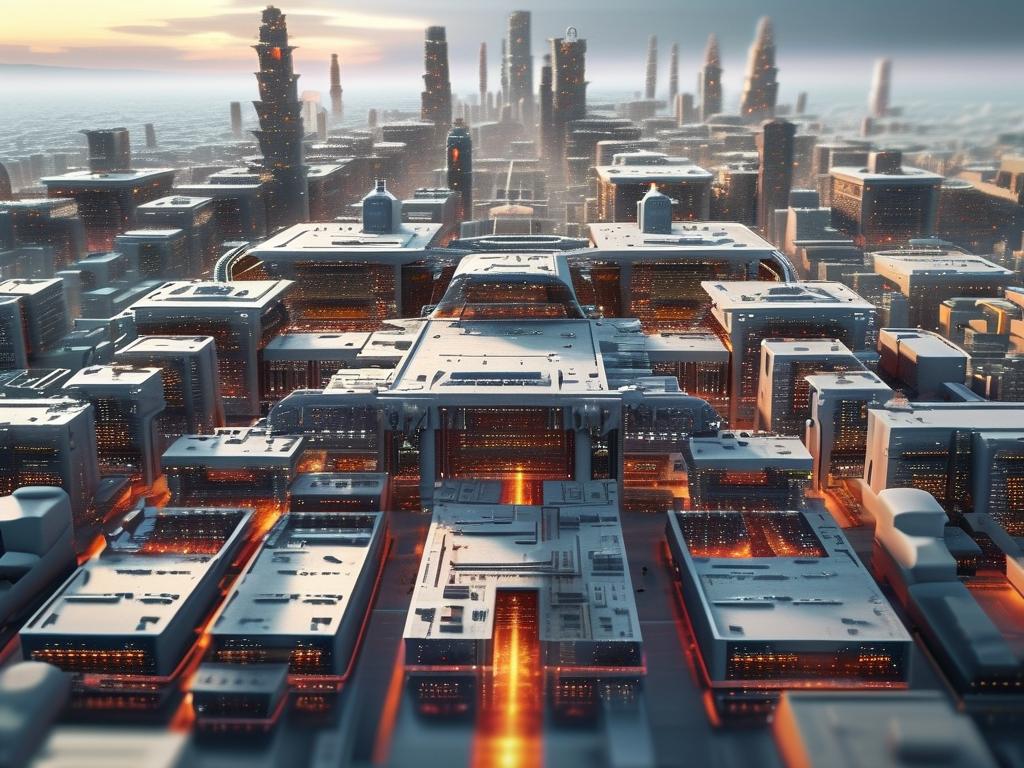In the realm of modern computing, distributed systems have become indispensable for handling massive workloads, ensuring scalability, and maintaining resilience across diverse environments. However, a common point of confusion among developers and architects revolves around the distinction between distributed technology and distributed architecture. While they are intertwined in practice, grasping their differences is crucial for designing robust systems that meet specific business needs. This article delves into the nuances, explaining how technology serves as the implementation toolkit, while architecture provides the strategic blueprint.

Distributed technology refers to the tangible tools, protocols, and software components that enable communication, data storage, and computation across multiple networked nodes. These elements are the nuts and bolts that handle the gritty details of distribution. For instance, communication protocols like HTTP, gRPC, or WebSockets facilitate data exchange between servers and clients, ensuring messages flow reliably even over unreliable networks. Messaging systems such as Apache Kafka or RabbitMQ act as intermediaries, queuing and delivering events to prevent data loss during high-traffic scenarios. On the storage front, distributed databases like Cassandra or MongoDB shard data across clusters, allowing horizontal scaling and fault tolerance through replication. Additionally, computation frameworks like Apache Spark or Hadoop distribute processing tasks, breaking down big data jobs into smaller chunks that execute in parallel. These technologies are often implemented through code, such as this Python snippet using Kafka to produce a message:
from kafka import KafkaProducer
producer = KafkaProducer(bootstrap_servers='localhost:9092')
producer.send('test-topic', b'Hello, distributed world!')
producer.flush()
This snippet demonstrates how Kafka technology handles message queuing, but it's just one piece of the puzzle—technology alone doesn't dictate how the system is organized.
In contrast, distributed architecture represents the high-level design and structural framework that defines how components interact within a system. It's the strategic vision that guides decision-making, focusing on patterns, principles, and topologies to achieve goals like scalability, availability, and maintainability. For example, a microservices architecture decomposes an application into loosely coupled services, each running independently and communicating via APIs; this pattern allows teams to update or scale individual services without disrupting the whole system. Event-driven architectures, on the other hand, rely on events to trigger actions across services, promoting asynchronous processing and decoupling. Peer-to-peer architectures distribute responsibilities equally among nodes, eliminating single points of failure, while client-server models centralize control for simpler management. Architectural choices also encompass consistency models—like eventual consistency for high availability or strong consistency for data accuracy—and fault tolerance mechanisms such as redundancy and failover strategies. Essentially, architecture answers the "why" and "how" of system organization, setting the stage for technology selection.
The key differences lie in their scope and purpose. Distributed technology deals with the "what"—the concrete tools and implementations that execute tasks. It's hands-on and often involves selecting specific libraries or platforms based on performance metrics, such as throughput or latency. For instance, choosing Kafka over RabbitMQ might stem from its superior handling of high-volume streams. Conversely, distributed architecture addresses the "how" and "why"—the overarching design that ensures components work harmoniously. It's conceptual and strategic, focusing on trade-offs like scalability versus complexity. A real-world analogy is building a house: technology includes the hammers and nails (like Kafka for messaging), while architecture is the blueprint that decides room layouts and materials for durability. Misalignment here can lead to issues; for example, adopting a microservices architecture without the right messaging technology might cause bottlenecks in service communication.
Moreover, the interplay between the two is dynamic. Architectural decisions drive technology choices—opting for an event-driven architecture might necessitate Kafka or similar tech for event streaming. Yet, technology constraints can influence architecture; if a chosen database lacks strong consistency, the architecture might need compensating patterns like sagas for transaction management. This relationship underscores why a holistic approach is vital: overlooking architecture can result in a fragmented system where technologies clash, while neglecting technology might leave an elegant design unimplementable. In practice, teams should start with architectural planning to define goals, then select technologies that align, iterating as needs evolve.
To illustrate, consider a cloud-based e-commerce platform. The architecture might employ a microservices pattern for scalability, with separate services for inventory, orders, and payments. Technology choices could include gRPC for inter-service communication (ensuring low latency) and Cassandra for distributed storage (handling high write loads). Without this synergy, the system might falter—using monolithic technology in a microservices architecture could negate scalability benefits.
In , understanding the distinction between distributed technology and architecture is foundational for building effective systems. Technology provides the executable components, while architecture shapes the vision and structure. By mastering both, teams can create resilient, scalable solutions that adapt to changing demands. As distributed computing evolves, this clarity will only grow in importance, empowering innovation in an increasingly interconnected world.









